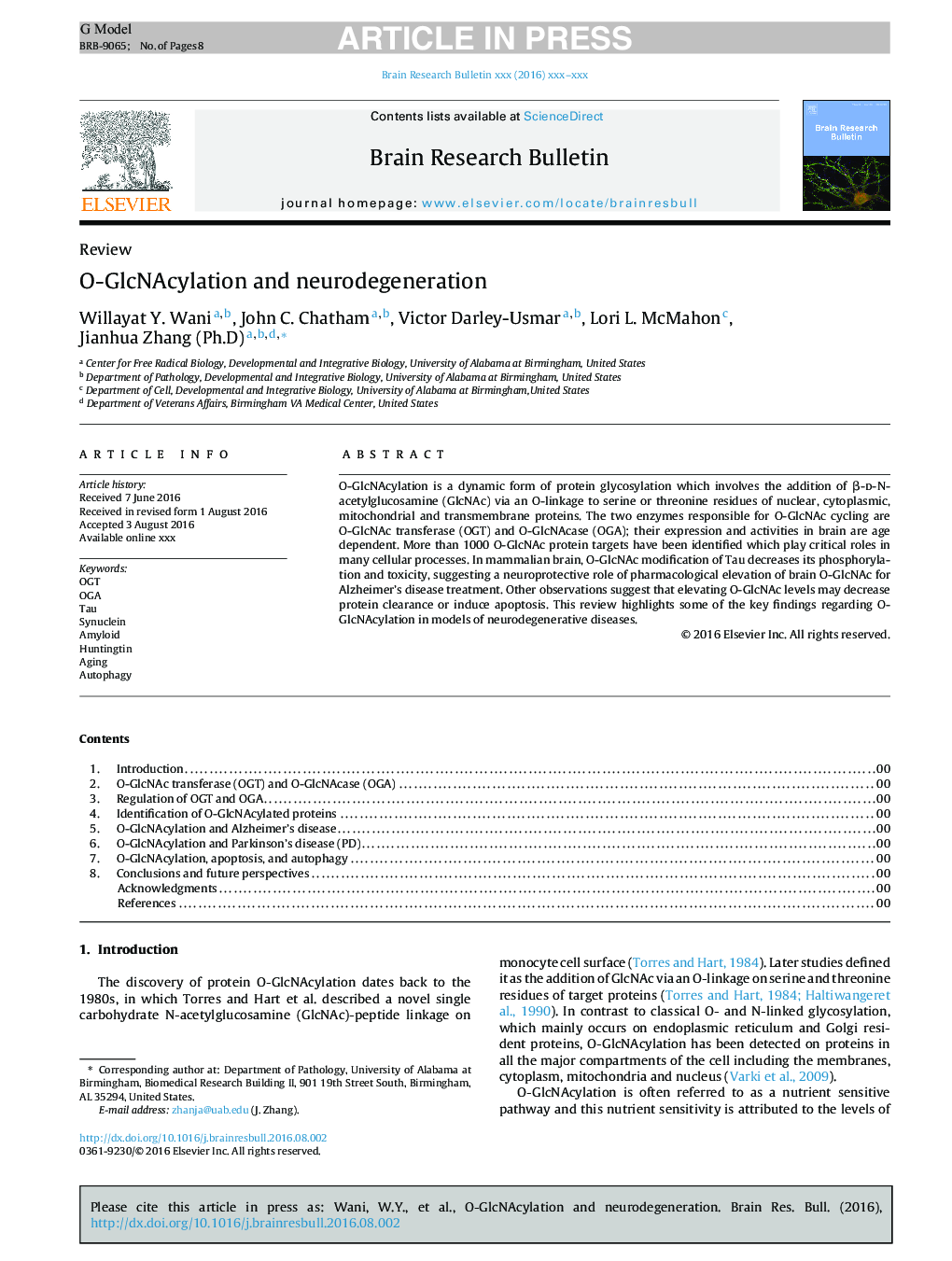| Article ID | Journal | Published Year | Pages | File Type |
|---|---|---|---|---|
| 5736201 | Brain Research Bulletin | 2017 | 8 Pages |
Abstract
O-GlcNAcylation is a dynamic form of protein glycosylation which involves the addition of β-d-N-acetylglucosamine (GlcNAc) via an O-linkage to serine or threonine residues of nuclear, cytoplasmic, mitochondrial and transmembrane proteins. The two enzymes responsible for O-GlcNAc cycling are O-GlcNAc transferase (OGT) and O-GlcNAcase (OGA); their expression and activities in brain are age dependent. More than 1000 O-GlcNAc protein targets have been identified which play critical roles in many cellular processes. In mammalian brain, O-GlcNAc modification of Tau decreases its phosphorylation and toxicity, suggesting a neuroprotective role of pharmacological elevation of brain O-GlcNAc for Alzheimer's disease treatment. Other observations suggest that elevating O-GlcNAc levels may decrease protein clearance or induce apoptosis. This review highlights some of the key findings regarding O-GlcNAcylation in models of neurodegenerative diseases.
Related Topics
Life Sciences
Neuroscience
Cellular and Molecular Neuroscience
Authors
Willayat Y. Wani, John C. Chatham, Victor Darley-Usmar, Lori L. McMahon, Jianhua Ph.D,
